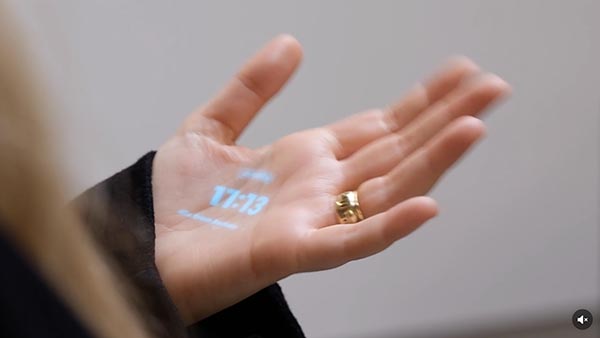
Love’s Labour’s Found?
This month marks the 400th anniversary of Shakespeare’s First Folio, the first printed edition of what is believed to be Shakespeare’s complete plays. And what would be a better way to celebrate than to discover a lost Shakespeare play. Wait…a lost Shakespeare play!? Holy shite!! The evidence is decidedly circumstantial, but it is tantalizing. In 1952, a London book collector known as “Inky” found some random sheets in a 17th collection of religious sermons. He realized it was an inventory list of books sold by a stationery shop in Elizabethan London. Halfway down the list was “Loves labor lost… Loves labor won.” The first was a fairly famous play by Shakespeare, the second was…a sequel? Says the BBC:
How did this enigmatic work end up being sold by a bookshop? Could it really be possible that a play by the man widely considered to be the greatest ever dramatist and writer in the English language
There is no doubt.
had gone missing? This is a story of antique manuscripts, scattered hints, heated debates, accidental discoveries – and the lingering secrets of William Shakespeare.
“This [list] was something that was never meant to survive – it was someone’s daily note,” says Coker. “And it’s the crazy random happenstance of it ending up in a book that survives for hundreds of years, and then the person who is taking it apart in the 1950s doing the double take to look closely and recognise what this piece of paper is,” she says.
It's not unusual that it may have actually existed at one time but didn’t survive. It’s a miracle we have as many Elizabethan—much less Shakespearean— plays today as we do.
In the Elizabethan era, plays ran the gauntlet of numerous existential threats. For one thing, paper was expensive; so much so that any written manuscript, including a playscript by a literary genius, could eventually end up being recycled for an entirely different purpose. This remained true for centuries. In the book Elizabethan Handwriting, 1500-1650: A Manual, the authors relate the story of an 18th-Century antiquarian who stored a pile of precious manuscripts in his kitchen, only to discover later that many had been used by the cook to line baking dishes.
Shakespeare was fortunate in that, in November 1623, his friends and colleagues had pieced together the First Folio.
This comprehensive tome documented “Mr William Shakespeare’s Comedies, Histories & Tragedies, published according to True Originall Copies.” It included 36 plays, 18 of which had never appeared in print before – works that they had painstakingly pieced together using their exclusive access to original prompt books, scripts and notes. Without this intervention, All’s Well That Ends Well, The Taming of the Shrew, and Macbeth would have disappeared centuries ago.
Love’s Labour’s Won, if it did ever exist, is likely not the only lost play by the Immortal Bard. In 1663, another of those bookseller inventory lists was discovered which mentioned “The History of Cardenio – a play by John Fletcher and William Shakespeare”—not impossible, as Shakespeare was known to have collaborated with John Fletcher on other plays, which have also vanished. (Although, given some of Shakespeare’s known collaborations—Troilus and Cressida? Timon of Athens? His collaborators never did him any favors.)
Though Love’s Labour’s Won has only gained traction as a possible lost play since the 1950s, the title was first mentioned many centuries earlier. In 1598, a clergyman and schoolmaster – who was born just a year before Shakespeare – included it on his list of recommended comedies.
Based on this information, it’s thought that Love’s Labour’s Won was written in the mid-1590s. This, in turn, would mean the play was most likely staged at The Theatre – a playhouse in Elizabethan-east-London’s “suburbs of sin” which preceded the famous Globe Theatre, built by Shakespeare's acting company.
The idea of a sequel was not unknown in Shakespeare’s day—he himself wrote sequels, although these were his history plays like the Henriad which comprised Richard II, Henry IV 1 and 2, and Henry V.
So…what is the likelihood of LLW turning up some day? Not completely out of the question.
“We’re constantly finding new stuff in, you know, in private collections. Libraries that haven't been fully catalogued," says Taylor. Take the recent discovery of a Tudor warrant book in the British National Archives, which has revealed grisly instructions for Anne Boleyn’s execution. Taylor points out that she's one of the most written-about people of all time – who, he says, has been called not only Anne of 1,000 Days but Anne of 1,000 Books – and yet, new documents and evidence is still being uncovered.
…Taylor, Smith and Coker all fully expect that one day in the future, someone, somewhere, will stumble upon a tattered old book – perhaps in a dark, forgotten corner of a museum, or a mysterious trunk in an attic. They will stoop down, blow the dust off its well-worn pages, and read the following words: “Love’s Labour’s Won, a comedy by Willam Shakespeare”. Until then, we can only wait.
As Shakespeare wrote in The Two Gentlemen of Verona: “Hope is a lover's staff; walk hence with that/And manage it against despairing thoughts.”
And maybe there is a Three Men of Verona kicking around somewhere.
Arrr…
And you thought you went to some very specific conferences, but this one takes the cake. From Atlas Obscura:
In November 2021, linguists from around the world met in Lausanne, Switzerland, for the seventh edition of a conference focusing specifically on the “R” sound.
No, it was not “Talk Like a Pirate” Day.
The conference, called ‘R-Atics, included a presentation on the intrusive R used in the Falkland Islands, a reconstruction of what R sounded like in historical Armenian, and a discussion of the R sounds in Shiwiar, an indigenous Ecuadorian language spoken by well under 10,000 people, among other events and talks.
Then they brought up the “crispy R.” What?
The crispy R is a phenomenon that some linguists had noticed, but which had gone largely unstudied—until the phrase “crispy R” was bestowed on it by Brian Michael Firkus, better known as Trixie Mattel, the winner of the third season of RuPaul’s Drag Race All Stars, and later popularized via TikTok. The sound is easier to point out than it is to either describe or reproduce.
To wit: check out this video.
Crispy or not, the R sound in general is a pretty unusual one.
Linguists use the word “rhoticity” to talk about the R sound on a very basic level. English is an especially ridiculous language in the way letters don’t always do what they appear to, and don’t even do that in any kind of consistent manner: Think about how utterly silly it is that “rough,” “cough,” “bough,” and “though” are all pronounced with different vowel sounds.
…In American English, that non-rhoticity was, from the colonial era up to the early 20th century, considered prestigious: It was associated with the wealthy port cities of the Northeast that had extensive contact with Europe. (Think of FDR’s “the only thing we have to feah is feah itself,” or basically anything JFK ever said.) Labov’s study documented the decline of that prestigious connection. Non-rhoticity vanished from the upper classes as the United States overtook England as a world power. You can learn an awful lot about people, culture, and politics by studying R, it turns out. Also, it’s really weird, and linguists love that.
And here’s something that will blow your mind: R is not really a consonant.
From the perspective of how sounds are physically generated, consonants are made by constricting or closing some part of your mouth or throat. Sometimes that’s done by closing your lips (P), or by blocking the flow of air with your tongue and then suddenly releasing it (T), that kind of thing. Vowels, on the other hand, are made with basically an open tube, from your vibrating vocal cords through your throat and out of your mouth. You make different vowel sounds by moving your tongue and lips around, but the tube stays open. R, like some other “consonants,” such as W and Y, aren’t produced the way a K or B is. It’s produced like a vowel, at least in English.
But back to the crispy R.
what might be happening is that, well, it’s not really about the R, but rather what the R does to a neighboring sound. A consonant such as K or B is called a “stop,” which means it is a sound that requires the cessation of noise. As you transition from that to an R sound—in a word like “crispy”—the shape of your tongue will change the path of the burst of air used for the combined sound. In “crispy,” according to this theory, it’s not the R that’s crispy. It’s the K.
R you confused yet?
Talk to the Hand
All technology is inevitably ephemeral. The laptop replaced the desktop PC, and the smartphone replaced the laptop. So what’s going to replace the smartphone? It could be the smart hand. Or, that is, the first artificially intelligent device: a company called Humane (uh huh) has unveiled the AI pin. Says the NY Times:
They’re billing the pin as the first artificially intelligent device. It can be controlled by speaking aloud, tapping a touch pad or projecting a laser display onto the palm of a hand. In an instant, the device’s virtual assistant can send a text message, play a song, snap a photo, make a call or translate a real-time conversation into another language. The system relies on A.I. to help answer questions (“What’s the best way to load the dishwasher?”) and can summarize incoming messages with the simple command: “Catch me up.”


The technology is a step forward from Siri, Alexa and Google Assistant. It can follow a conversation from one question to the next, without needing explicit context. It’s also capable of editing a single word in a dictated message, rather than requiring the user to correct an error by repeating the text from beginning to end, as other systems do. And it does it from a gadget that’s reminiscent of the badges worn in Star Trek.
Hmmm…
For the start-up to succeed, people will need to learn a new operating system, called Cosmos, and be open to getting new phone numbers for the device. (The pin comes with its own wireless plan.) They’ll need to dictate rather than type texts and trade a camera that zooms for wide-angle photos. They’ll need to be patient because certain features, like object recognition and videos, won’t be available initially. And the pin can sometimes be buggy, as it was during some of the company’s demos for The New York Times.
We a shall see.
E Ink
Here at the Around the Web shebeen, we have long been fans of E Ink technology, which had been the default ebook display until the iPad and backlit LCD displays. Unfortunately, one rarely hears of E Ink displays unless it’s something really unusual.
There are many advantages of the E Ink technology, such as its power efficiency and its viewability. Thus, says The Verge:
Those advantages are reasons why you’re starting to see E Ink show up in some unexpected places, like on a robot dog and in the price tags at your grocery store. But is this progress enough to hurtle E Ink into the mainstream? We had a chat with the folks at E Ink to take a look at how the tech works, where it originated, where it’s at, and where it’s headed.
Inside Job
Do want to live a more sustainable lifestyle? Are you looking for a new luxury car? If yes, then good news! Automakers have started using recycled materials for car interiors. Says Axios:
Turning recycled denim, fishing nets and plastic bottles — or even mushroom roots — into automotive cockpits may help the industry reduce its carbon footprint.
Plus, it’s what today’s premium customers prefer in place of plush leather or polished wood, carmakers say.
“Sustainability is luxury,” says Anders Karrberg, head of global sustainability at Volvo Cars. “It speaks to a younger generation.”
The first company to test this theory will be Volvo with its new electric vehicle, the EX30 SUV.
The bare-bones interior features seat fabric sewn from denim scraps, a dashboard woven with thread from flax and linseed plants, and speckled door accents made from ground-up vinyl window frames.
The EX30 has the smallest carbon footprint of any Volvo, the company says.
Kia is also starting to use more recycled or plant-based materials in its interiors—including its own home-grown mushrooms via mycelium.
“Using mycelium enables us to mimic the processes we see in nature and leverage it to design more sustainable solutions — the material can be grown in any shape you want using a mold,” Marília Biill, who heads up color, materials and fabric design at Kia, notes in a press release.
Shroom shroom!
Graphene Harvest
Was it a good week for graphene news? It’s always a good week for graphene news! graphene-based textiles harvest energy from your clothing. From (who else?) Graphene-Info:
Aimed at redefining the integration of energy solutions into everyday life, GRAPHERGIA aims to transform how we use and store energy. Its main goal is to develop and deploy cutting-edge graphene-based materials into energy harvesting and storage devices. These advances would enable scalable and cost-ef?cient production of two-dimensional (2D) material technologies for a wide array of applications.
E-textiles were the kickoff application.
“We envision a world where your clothing does more than just look good—it powers your devices, acts as a sensor and connects you seamlessly to the Internet of Things (IoT),” says Prof. Spyros Yannopoulos, the project coordinator for GRAPHERGIA. “Imagine e-textiles that not only adapt to your body but also charge themselves. This is the future we are creating.”
An executive could literally wear a power suit.
Will They Ever Learn?
The State of Minnesota is in the middle of redesigning its official state seal and state flag, under the auspices of the State Emblems Redesign Commission which insists it “must accurately and respectfully reflect Minnesota’s shared history, resources, and diverse cultural communities.” Rather than hire a proper designer, they decided to ask the public. You can imagine how well it worked out. Says USA Today:
Since the submissions were open to the public in the year 2023, there were bound to be submissions that stretched the limits of what can be put on a flag. Minnesotans didn't disappoint, offering up artist statements, textures and a very good dog.

Well, sure, why not?
The field will be narrowed down to five choices later this month and a new design will be chosen by the end of the year.
Turbine, Turbine, Turbine
Wind turbines. An increasingly common feature of the sustainable landscape. But are today’s turbines as efficient as they could be? Not really. The current wind turbine form factor is pretty expensive. Is there an alternative? Could be. Says Core77:
A company called Airloom Energy has rethought the form factor. Their clever alternative design for a utility-scale wind-energy-capturing system features “unique geometry [that] generates the same amount of electricity as conventional turbines at a fraction of the cost.”
Interestingly, they’ve gone NASCAR.
Rather than a tower, Airloom has developed a sort of suspended NASCAR track. This track is mounted to 25-meter (82') poles, and has a series of vertical 10-meter (33') blades hanging from it. The blades are not attached directly to the track, but to a cable that runs the perimeter of the track. As the wind blows, the blades start to move around the track. The cable gets pulled through power take-off units that harvest the resultant energy.

Even better:
The company also says an Airloom wind farm costs less than 25% of the price of a turbine-based farm, and that the end result is an electricity price of $0.013/kWh—which is about a third of the $0.038/kWh price offered by a turbine wind farm.
Don’t Worry, Bee Happy
Bees today are in trouble and, strange as it may seem, AI is coming to their rescue. (Maybe call it BI…) A company called Beewise has developed an AI-powered robotic beehive that can help beekeepers save honeybee colonies. Says Axios:
The BeeHome 4 (pictured), which looks like a large filing cabinet, has space for up to 10 colonies that build out honeycombs across multiple frames (the same type of wooden frames that a traditional beekeeper uses).
Inside the enclosed box, a robotic arm gently lifts up the frames into a section where three cameras can scan them and detect any irregularities.
With 45% of bee colonies dying every year, traditional beekeepers are struggling with challenges like Varroa mites, pesticides, and habitat loss, all exacerbated by climate change.

Using the cameras and computer vision, the AI models can detect things like if the bees are hungry, covered in mites, or exposed to pesticides — and then take action if necessary.
Such as?
If the AI detects mites in the hive, the robot can lift the frames and place them into a section of the box that heats each frame by 2 degrees, an increase hot enough to kill the mites but not the bees.
Taking the hive mind to its next level.
Trout It All Out
Do you like brandy? What about trout? If yes to both, good news! New Hampshire distillery Tamworth Distilling has come out with a trout-flavored brandy. Says Food & Wine:
The distillery’s latest release, House of Tamworth Saison De Frai, was inspired by the Swift River, which flows right past the distillery. As a result, each bottle of this apple brandy has been flavored with a small scoop of roe taken from New Hampshire’s state fish, the Brook Trout.
Sounds fishy…
Canceling Cap’n Crunch
Do you like gaming? But does the crunching of snack foods distract you horribly? If so, you may want to check out this Doritos–Smooth Technology collaboration which resulted in Doritos Silent, an (oy) AI-powered crunch-cancelling software that eliminates the distracting crunching sound of chips. Says Laughing Squid:
The machine-learning technology listened to the sound of over 5,000 crunches to effectively recognize and silence distracting chip consumption.
Crunch Cancellation is powered by artificial intelligence that has been trained by over 5,000 Doritos crunches, so no crunch will go undetected
Cap’n Crunch has mobilized his navy and will brook no cancellation of crunching. The war has only just begun!
This Week in Printing, Publishing, and Media History
November 13
1850: Scottish novelist, poet, and essayist Robert Louis Stevenson born.
November 14
1840: French painter Claude Monet born.
1851: Herman Melville’s novel Moby-Dick is published in the U.S.
1889: Pioneering female journalist Nellie Bly (aka Elizabeth Cochrane) begins a successful attempt to travel around the world in less than 80 days. She completes the trip in 72 days.
1916: American screenwriter and producer Sherwood Schwartz born.
1922: The British Broadcasting Company begins radio service in the United Kingdom.
1952: The first regular UK Singles Chart is published by the New Musical Express.
1967: American physicist Theodore Maiman is given a patent for his ruby laser systems, the world’s first laser.
November 15
1926: The NBC radio network launches with 24 stations.
1968: The Cleveland Transit System becomes the first transit system in the western hemisphere to provide direct rapid transit service from a city's downtown to its major airport.
1971: Intel releases the world’s first commercial single-chip microprocessor, the 4004.
November 16
534: Justinian I, who was an Eastern Roman (Byzantine) emperor in Constantinople, approves and publishes the second and final revision of the Codex Justinianus.
1889: American director, producer, and playwright George S. Kaufman born.
1904: English engineer John Ambrose Fleming receives a patent for the thermionic valve (aka the vacuum tube).
1914: The Federal Reserve Bank of the United States officially opens.
1938: LSD is first synthesized by Albert Hofmann from ergotamine at the Sandoz Laboratories in Basel.
November 17
1749: French chef Nicolas Appert born. He invented the principle of canning.
1790: German mathematician and astronomer August Ferdinand Möbius born. (It’s not true that his life had no beginning and no end.)
1839: Oberto, Giuseppe Verdi's first opera, opens at the Teatro alla Scala in Milan, Italy.
1944: College basketball coach Jim Boeheim born.
1947: American scientists John Bardeen and Walter Houser Brattain observe the basic principles of the transistor, a key element for the electronics revolution of the 20th century.
1968: Viewers of the Raiders–Jets football game in the eastern United States are denied the opportunity to watch its exciting finish when NBC broadcasts Heidi instead, prompting changes to sports broadcasting in the U.S.
2019: The first known case of COVID-19 is traced to a 55-year-old man who had visited a market in Wuhan, Hubei Province, China. And so it begins…
November 18
1787: French physicist and photographer, and inventor of the daguerreotype, Louis Daguerre, born.
1836: English playwright and poet W. S. Gilbert born.
1865: Mark Twain’s short story “The Celebrated Jumping Frog of Calaveras County” is published in the New York Saturday Press.
1883: American and Canadian railroads institute five standard continental time zones, ending the confusion of thousands of local times. Well, it was about time.
1922: French author and critic Marcel Proust dies (b. 1871).
1928: Release of the animated short Steamboat Willie, the first fully synchronized sound cartoon, directed by Walt Disney and Ub Iwerks, featuring the third appearances of cartoon characters Mickey Mouse and Minnie Mouse. This is considered by the Disney corporation to be Mickey’s birthday.
1963: The first push-button telephone goes into service.
November 19
1909: Austrian-American theorist, educator, and author Peter Drucker born.
1916: Samuel Goldwyn and Edgar Selwyn establish Goldwyn Pictures.
1954: Télé Monte Carlo, Europe’s oldest private television channel, is launched by Prince Rainier III.
1955: National Review publishes its first issue.
1959: The Ford Motor Company announces the discontinuation of the unpopular Edsel.
1967; The establishment of TVB, the first wireless commercial television station in Hong Kong.
1998: Vincent van Gogh’s Portrait of the Artist Without Beard sells at auction for US$71.5 million.
2006: Nintendo's first video game console with motion control, the Wii, is released.
November 20
1805: Beethoven's only opera, Fidelio, premieres in Vienna.
1908: British-American journalist and author Alistair Cooke born.
1910: Russian author and playwright Leo Tolstoy dies (b. 1828).
1924: Polish-American mathematician and economist, and coiner of the term “fractal,” Benoit Mandelbrot born.
1936: American novelist, essayist, and playwright Don DeLillo born.
1969: The Plain Dealer publishes explicit photographs of dead villagers from the My Lai Massacre in Vietnam.
1985: Microsoft Windows 1.0 is released.
November 21
1676: The Danish astronomer Ole Rømer presents the first quantitative measurements of the speed of light.
1694: French historian, playwright, and philosopher Voltaire (né François-Marie Arouet) born.
1783: In Paris, Jean-François Pilâtre de Rozier and François Laurent d'Arlandes, make the first untethered hot air balloon flight.
1877: Thomas Edison announces his invention of the phonograph, a machine that can record and play sound.
1898: Belgian painter René Magritte born.
1902: Polish-American novelist and short story writer, Nobel Prize laureate Isaac Bashevis Singer born.
1905: Albert Einstein’s paper that leads to the mass–energy equivalence formula, E = mc², is published in the journal Annalen der Physik.
1945: American humorist, newspaper columnist, and actor Robert Benchley dies (b. 1889).
1969: The first permanent ARPANET link is established between UCLA and SRI.
November 22
1819: English novelist and poet George Eliot (née Mary Ann Evans) born.
1869: French novelist, essayist, and dramatist, Nobel Prize laureate André Gide born.
1928: The premier performance of Ravel’s Boléro takes place in Paris.
1935: The China Clipper inaugurates the first commercial transpacific air service, connecting Alameda, California with Manila.
1963: English novelist and philosopher Aldous Huxley dies (b. 1894).
1977: British Airways inaugurates a regular London to New York City supersonic Concorde service.
1995: Toy Story is released as the first feature-length film created completely using computer-generated imagery.
November 23
534 BC: Thespis of Icaria becomes the first recorded actor to portray a character onstage.
1644: John Milton publishes Areopagitica, a pamphlet decrying censorship.
1888: American comedian and musician Harpo Marx (né Adolph Marx) born.
1889: The first jukebox goes into operation at the Palais Royale Saloon in San Francisco.
1924: Edwin Hubble's discovery, that the Andromeda “nebula” is actually another island galaxy far outside of our own Milky Way, is first published in The New York Times.
1936: Life magazine is reborn as a photo magazine and enjoys instant success.
1963: The BBC broadcasts the first episode of An Unearthly Child (starring William Hartnell), the first story from the first series of Doctor Who, which is now the world’s longest running science fiction drama.
November 24
1713: Irish novelist and clergyman Laurence Sterne born.
1859: Charles Darwin publishes On the Origin of Species.
1877: Anna Sewell’s animal welfare novel Black Beauty is published.
1962: The influential British satirical television program That Was the Week That Was is first broadcast.
November 25
1915: Albert Einstein presents the field equations of general relativity to the Prussian Academy of Sciences.
1952: Agatha Christie’s murder-mystery play The Mousetrap opens at the Ambassadors Theatre in London. It will become the longest continuously-running play in history.
1968: American novelist, critic, and essayist Upton Sinclair dies (b. 1878).
1974: English singer-songwriter and guitarist Nick Drake dies (b. 1948).
November 26
1789: A national Thanksgiving Day is observed in the United States as proclaimed by President George Washington at the request of Congress.
1863: United States President Abraham Lincoln proclaims November 26 as a national Thanksgiving Day, to be celebrated annually on the final Thursday of November.
1912: American journalist Eric Sevareid born.
1917: The Manchester Guardian publishes the 1916 secret Sykes-Picot Agreement between the United Kingdom and France.
1919: American author and publisher Frederik Pohl born.
2003: The Concorde makes its final flight.














